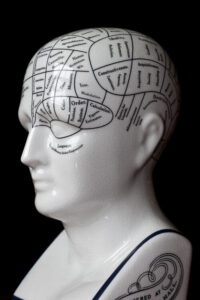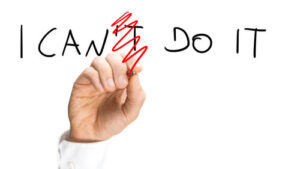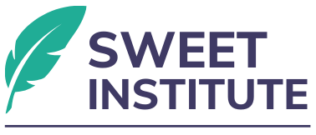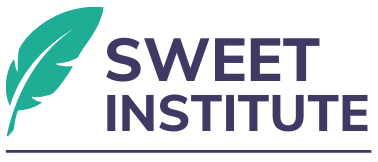The Placebo Enhancement Technique
When patients went to a pharmacy, in France, to get their medication, the pharmacist, at that specific location, told one group of patients how much better they could get from taking their medications (Group A), while saying nothing to the other group (Group B). Consistently, Group A reported better and better results from their medications, than Group B. Emile Coue, the pharmacist, in question, very curious about the power of suggestion in view of those outcomes for his patients, entertained his curiosity and the rest is history, as we now have the placebo effect, as we know it today, which is based on this pharmacist’s benevolent and seemingly simple act.
The placebo effect has now been rigorously studied, and there are many examples of its powerful effects and of how it can be used. Whether being told that this pill will help improve your health (as the case with the studies about sugar pills), or this bigger pill or red pill is more effective, there are numerous ways the results of the placebo effect can be enhanced. One way to enhance such an effect is through a series of exercises, one of which we will go over in detail in this article.
As an example of an enhancement exercise, a study was conducted with two groups of wounded soldiers after World War II. Group A was told to say, “Every day in every way, my health is getting better and better,†a number of 100 times, throughout the day, and each day. (This process was since coined as the Coue Method).
Group B was not enlisted to take part in this exercise. We’re sure you are fully aware of what the outcomes were. Of course, Group A had far improved health and a better outlook on life.
What has then been shown to be behind the positive results of these types of exercises or of the placebo effect is rooted in the highest cognitive functions of the brain. And given our increasing knowledge in Neuroscience, nonlinear Physics, and Mathematics, we now understand why our unconscious mind is as powerful as it is, at shaping reality, regardless of what the external circumstances might be (a sugar pill, wounded soldiers), as long as regular, frequent, and intense messages or thoughts are being used as input.
rooted in the highest cognitive functions of the brain. And given our increasing knowledge in Neuroscience, nonlinear Physics, and Mathematics, we now understand why our unconscious mind is as powerful as it is, at shaping reality, regardless of what the external circumstances might be (a sugar pill, wounded soldiers), as long as regular, frequent, and intense messages or thoughts are being used as input.
As such, the Placebo Enhancement Technique, which can be understood as a neuroscience-based technique, can be used as an adjunctive tool with all types of psychosocial or psychotropic interventions.
Here are 5 Steps to follow to use this technique:
-
I choose an area of life (My health; my relationship; my finances; my career; my weight; etc.)
-
I say, “Every day and every way my health is getting better and better.†(For the area of health, as an example).
-
Say the sentence multiple times in a row
-
Repeat rounds multiple times throughout the day
-
The aim is to say it at least 10 times per round and a minimum number of ten rounds throughout the day, and then each day, afterward
Rationale for the technique:
-
Countless studies in neuroscience, reveal a close link between our belief systems, our feelings, and our behaviors
-
Our belief systems automatically get expressed and show up as our behaviors, our habits, and the results we have in all areas of our life. And unless we adjust the types of beliefs we have, we will be unlikely able to adjust the types of results we get or obtain the types of results we want. CBT (Cognitive Behavioral Therapy) uses such a premise as part of addressing core beliefs and schema.
-
Any intervention that does not address the core beliefs related to an area, will likely limit the effectiveness of other types of interventions directed toward that same area. This also applies to when we set goals.
-
Individuals have a tool that they can perform at any time, anywhere, with expected results and it is basically effortless
Indication: The Placebo Enhancement Technique can be tailored based on the individual and/or on a specific symptom, and/or condition, including symptoms of depression; trauma-related symptoms; Report of feeling empty, stuck, or “not enough.†It can also be used in all areas of life, including health, relationships, finances, career, among others.
Benefits:
Increase in:
-
Empowerment

-
Optimism
-
Internal locus of control
-
Focus and refocusing
-
Self-confidence
Risks: When practiced initially, one may experience a feeling of discomfort or doubt. In such a case, this is to be recognized as being part of the process. One, therefore, is to acknowledge such a feeling and continue with the exercise.
Recommendations:
-
After saying the sentence, wait for one second before repeating it
-
During this one-second pause, consider directing your mind to how you’re feeling for that one second.
-
When performed for the first time, other possible responses maybe, “it feels silly,† “It feels awkward,â€Â “It feels childish.â€Â These are normal defensive based responses. As such the individual is to continue with the exercise
How to Introduce the Placebo Enhancement Technique:
There are several ways and the following is only one of them. C=Clinician; M=Mike – Individual
C: Science reports that what we say to ourselves matters whether we know it or not. Please tell how much you’ve found this to be trueÂ
M: This makes sense
C: Great. If you were to take a look at the things you say to yourself more often than not, tell me what I would be  hearing
hearing
M: You’d be hearing a lot of negative stuff
C: Thank you for letting me know. Please tell me examples
M: “I am so stupid.†“Why would I do that,â€Â “I never learn.â€
C: Wow, Mike. Thank you for these powerful examples. (Pause) Mike, if you could choose, tell me what you’d rather say instead?
M: Well. If I could choose, I would not say anything
C: Yes, “I would say nothing.†And as we said earlier, we usually say things to ourselves, some we like, others we don’t. Do you agree?Â
M: Yes, indeed
C: Indeed. So, Mike what are those things that you would like to say to yourself, instead.
M: “I am smart.†“I got it.†“I can do anything.â€
C: Thank you, Mike. Now, there is a very easy and simple exercise, which some people use to ensure that they are choosing only the things that they like to tell themselves throughout the day. One example is: “Every day in every way, my life is getting better and better.†Another example is “Every day in every way my health is getting better and better.†Or, “Every day in every way my finances are getting better and better.â€Â Tell me your thoughts about these.
M: Hmm. Ok. I can see how that might work for some people, but it is not going to work on me.
C: Yes. You are correct. This may work for some people and not for others. Now, tell me what you think about the exercise overall
M: I actually find it very interesting
C: Indeed. Tell me which of the three examples you find the most interesting
M: “My life is getting better and betterâ€
C: Great. Tell me how you feel about saying it right now, like the whole sentence “Every day in every way my life is getting better and better.â€
M: Well, that’s easy, “Every day in every way my life is getting better and better.â€
C: Great. Thank you, Mike. Now, tell me how you feel saying that again
M: Well, “Every day in every way my life is getting better and better.â€
C: Perfect. Thank you. Tell me how long you think it took you to say that just once.
M: Well, like a few seconds, I guess.
C: You’re correct. It takes about one minute to say this ten times. And I am wondering how you feel about trying this out at home for one minute
M: Well, one minute, that’s fine.
C: Perfect. Eventually, people are asked to do this for a total of ten minutes distributed throughout the day. Let me know if you’d like to see how that goes and we talk more about this next week
M: Well, I say so many negative things about myself that I think having to say something nice to myself ten times a day might be a good idea. So, I’ll just go ahead and do it.
C: Great. Thanks, Mike. Please tell me how you plan to do itÂ
M: Well, I may just do two rounds of ten times for two minutes each, ten times, and then boom. “Every day in every way my life is getting better and better.â€
C: Well, you are a pro now, Mike. Great job, I like it actually. When you come back, we can talk about different ways you can vary this exercise and still get the same effect. Â
M: Oh, you mean for example replacing “my life, with “my health,†or “my finances,†like you showed me in the exercises?
C: Absolutely, and you can continue to do so as much as you wish. For example, you can do: “Every day in every way I am getting better and better.â€Â “Every day in every way I am getting more and more confident.†“Every day in every way my relationship is getting better and better.â€Â “Every day in every way my life is getting better and better.†Just choose one of them at a time.  (Pause) Now, lastly, Mike, please tell me what you anticipate might get in the way of doing this exercise daily, as you said.
M: Nothing really. I’ll just go ahead and do it.
Notes:
-
In the spirit of meeting Mike where he was at, ensuring that I followed his train of thought, we took things once step at a time with him
-
I did not tell him “Hey, this is the best technique for you. Go and do this. Here’s how it works. Just do it and report next week.â€Â We now know that such an approach would preclude adherence and success when working with individuals
-
When Mike returns the following week, I will see how things went with him, and then use the same approach above to introduce him to the next steps of the exercise, including how it can be used along with additional exercises
-
The Clinician will find different possible responses and challenges from different individuals. We will be going over how to best address each one of them in subsequent articles.
Other recommendations: Possible variations of The Placebo Enhancement Technique:
As explained earlier, this simple, easy, and powerful technique can be used in and for any life areas. As such countless variations can be created with the same result, as long as the correct structure is maintained. Here are a few examples, with the inclusion of the three prior examples:
-
Every day in every way, my life is getting better and better.
-
Every day in every way, my health is getting better and better.
-
Every day in every way, my finances are getting better and better.
-
Every day in every way, I am getting better and better
-
Every day in every way, my relationships are getting better and better
-
Every day in every way, I’m getting closer and closer to my goals
-
Every day in every way, I am getting more and more confident
-
Every day in every way, things are getting better and better
-
Every day in every way, I’m getting more and more disciplined
-
Every day in every way, I’m getting closer and closer to my ideal weight
The SWEET Institute is determined to change how patients and clients are cared for, to change how continuing education/CEU is being conducted, and to be the place for all clinicians.
If you stand for anyone of the above, we invite you to join us and help heal the world through an increase in awareness, through a shift in belief systems, and through a different type of education-one that empowers us all and leads us to fulfillment and self-actualization.
We look forward to welcoming, working with, and serving, you.
With love,
Karen and Mardoche







